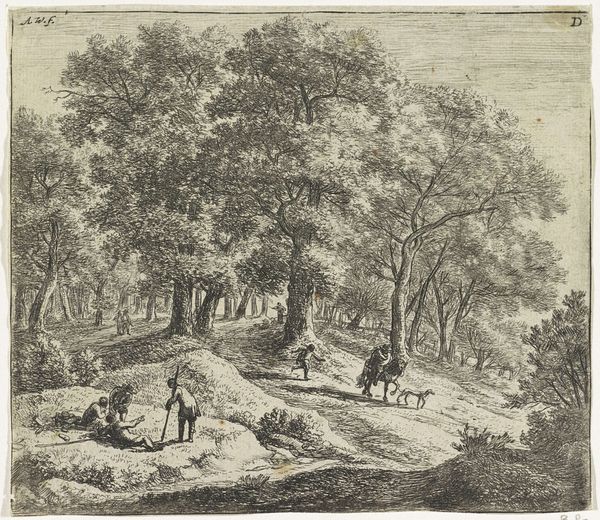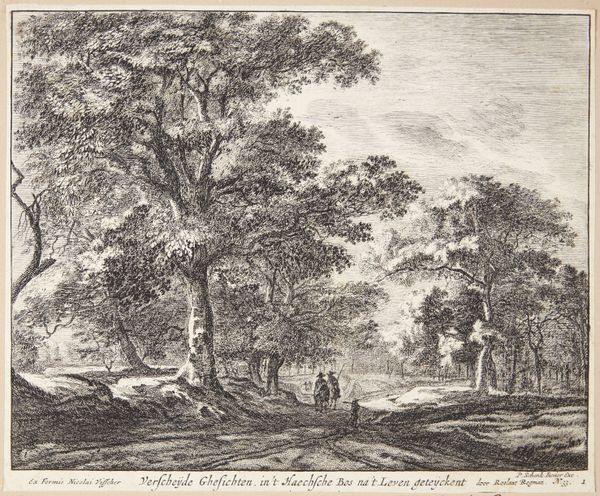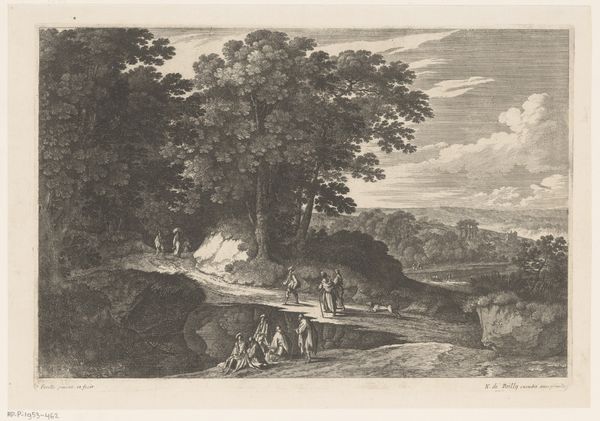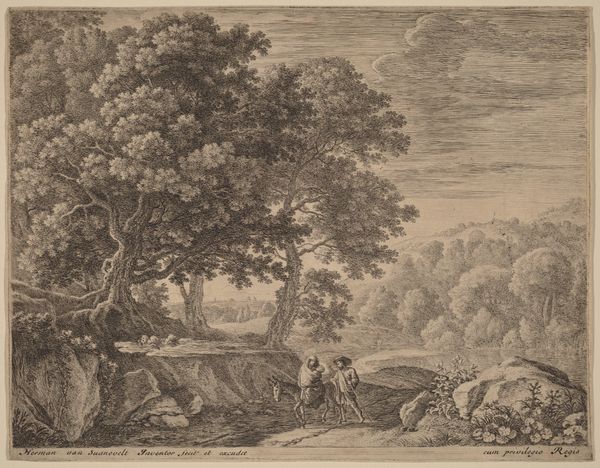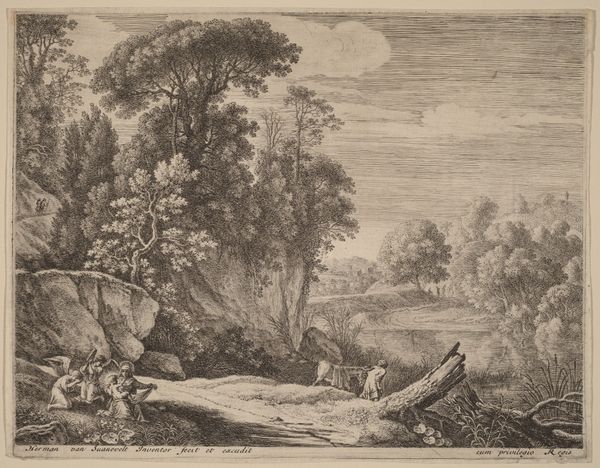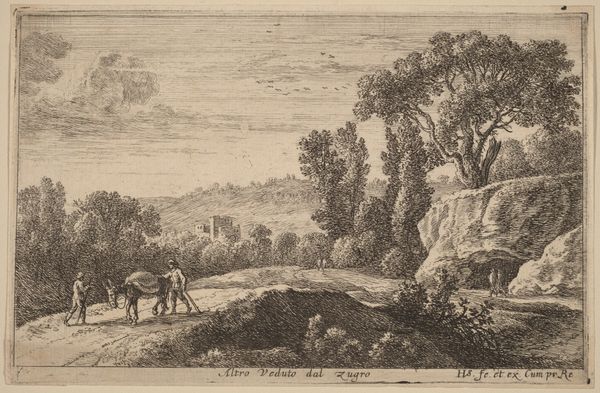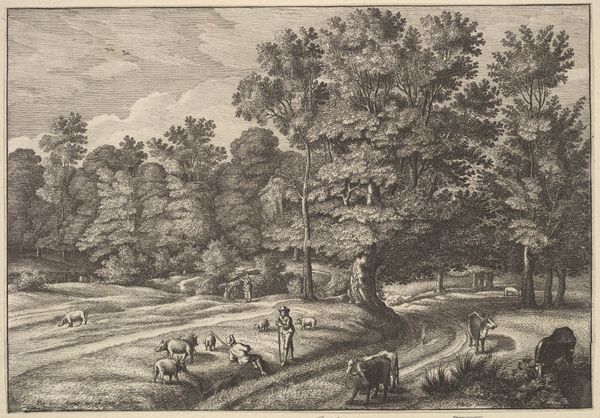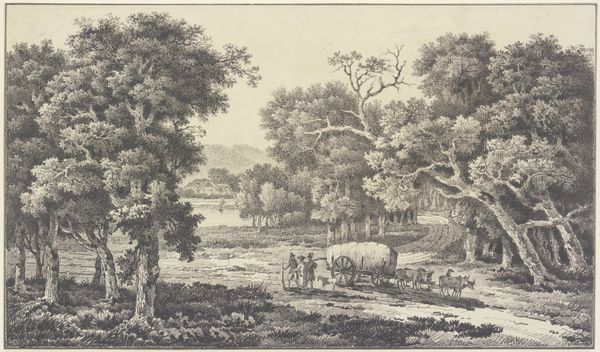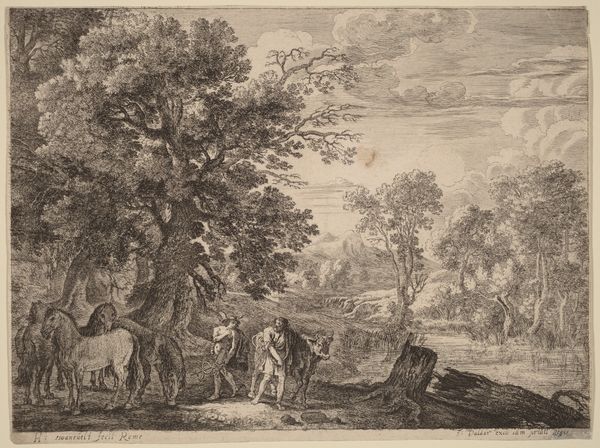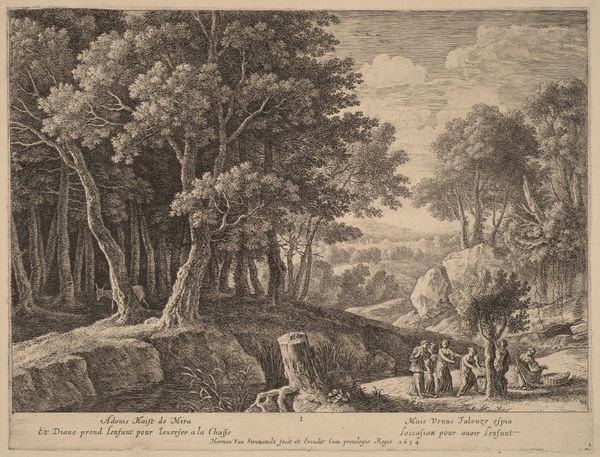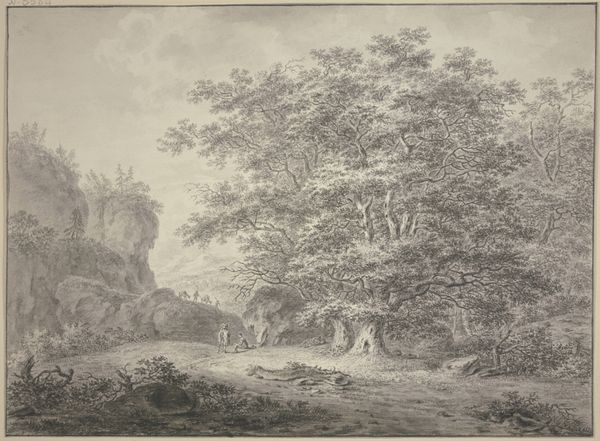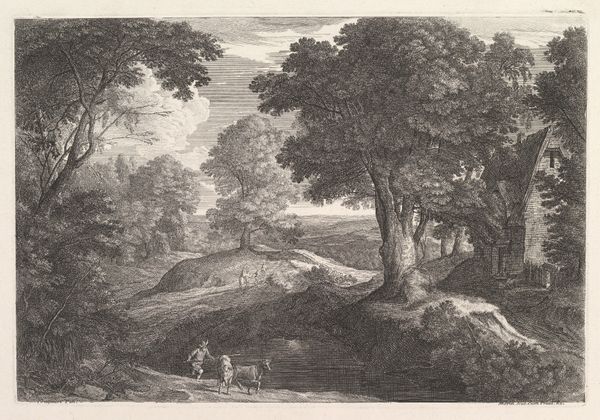
drawing, print, etching, engraving
#
drawing
#
baroque
# print
#
etching
#
landscape
#
history-painting
#
engraving
Dimensions: sheet: 7 13/16 x 10 1/2 in. (19.9 x 26.7 cm)
Copyright: Public Domain
Curator: Herman van Swanevelt’s etching, “Mercury Turning Battus to Stone,” likely made between 1620 and 1690, depicts a fascinating scene plucked from Ovid’s Metamorphoses. Editor: It has such a captivating, pastoral atmosphere despite its slightly unsettling narrative. The trees have such character; they really frame the human drama. Curator: Van Swanevelt, a Dutch artist working in Rome, helped popularize idealized landscapes imbued with mythological or biblical narratives. The story here is that Mercury, having stolen Apollo's cattle, seeks a witness, Battus, and then transforms him into stone for breaking his oath of silence. Editor: I’m drawn to how Mercury’s iconography here—his winged helmet and caduceus—signals more than just a messenger. He represents swift change, metamorphosis in its rawest form. It's a punishment, yes, but also a transformation of being. Curator: Precisely. This scene reflects broader anxieties in Baroque Europe about the exercise of power and divine justice. Art became a stage to discuss these matters through classical metaphors, safely distanced from direct commentary. The prints helped democratize this discussion. Editor: The scale is deceptively small but the themes resonate. A small etching can hold an outsized cultural impact, speaking to viewers across continents. Curator: True, disseminating classical lessons became increasingly valued within social circles, the prints operating almost like instructional pamphlets for decorum. Editor: The lasting effect of images… Swanevelt’s piece reminds us that a story can live on and accumulate meaning through depictions. The image itself becomes a symbol passed from generation to generation. Curator: In short, an object for the cabinet becomes part of an object lesson for society at large. Editor: Quite so. These little engravings continue to fascinate because of how many layers they convey.
Comments
No comments
Be the first to comment and join the conversation on the ultimate creative platform.
